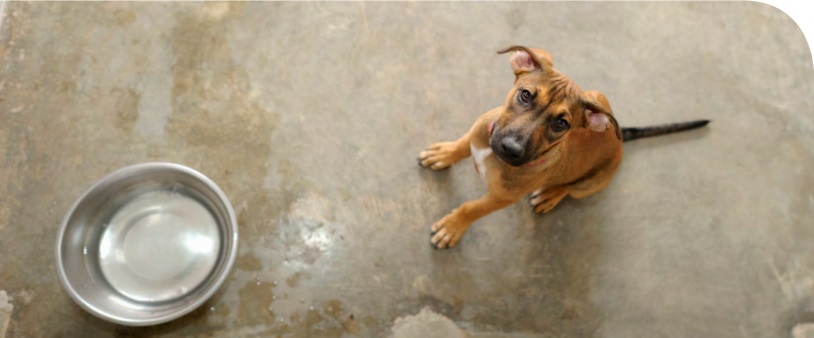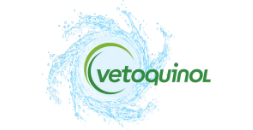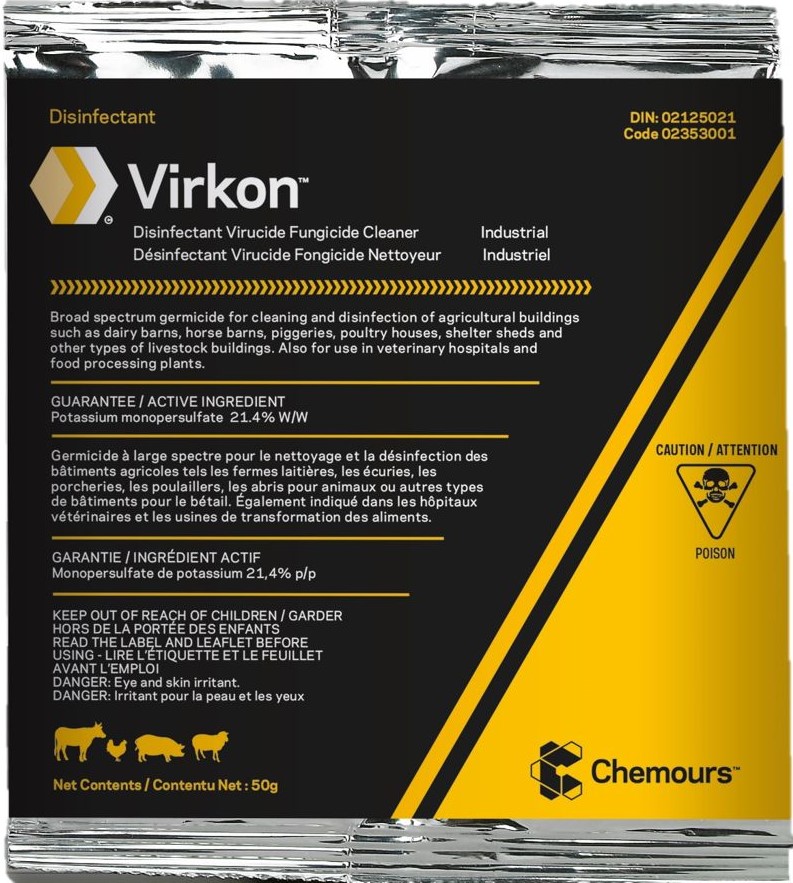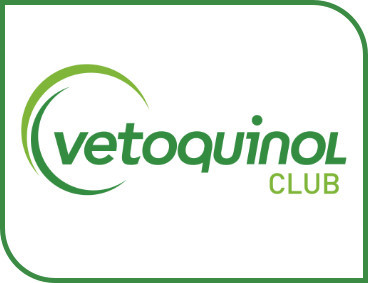A step-by-step approach for each animal specie.
RUNS AND KENNELS
- Remove all feed, feces, and bedding from the run.
- Remove feed and water containers.
- Select an appropriate cleaner and mix prior to application.
- For a feces-soiled dog run, an alkaline cleaner like Biosolve Plus* will work best to strip away organic material.
- Using a sprayer or foamer, apply the cleaner to all surfaces until it runs off.
- Apply the cleaning solution to feed and water containers. Allow the surfaces to soak for 10 to 20 minutes. Do not allow the cleaning solution to dry.
- Rinse the cleaner from all surfaces and feed and water bowls with water.
- Allow to dry.
- Mix and apply a disinfectant solution using a low pressure sprayer.
- Surfaces should remain wet with disinfectant for a minimum of 10 minutes and then be allowed to dry.
- BioSentry® 904 residues should be rinsed from feed and water containers after disinfection. Virkon® and Clinicide residues do not need to be rinsed.
*Warning*
Wear protective gloves, protective clothing, eye protection and face protection.
Causes severe skin burns and eye damage.
May cause an allergic skin reaction.
Causes damage to organs (Respiratory Tract) if inhaled

CAGES
- Remove all bedding and feed and water containers from the cage.
- Remove feces and newspaper or other absorbent materials.
- Cages that are soiled should be cleaned with an alkaline cleaner like Biosolve™ Plus* prior to disinfection.
- Select an appropriate cleaner and mix prior to application.
- Apply the cleaner to all surfaces until it is thoroughly wet.
- Apply the cleaning solution to feed and water dishes also. Allow the surfaces to soak for 10 to 20 minutes. Do not allow the cleaning solution to dry.
- Wipe with a water-soaked cloth or rinse the cleaner from all surfaces and feed and water bowls with water. Allow to dry.
- Mix and apply a disinfectant solution using a low pressure sprayer. Surfaces should remain wet with disinfectant for a minimum of 10 minutes and then be allowed to dry.
- BioSentry® 904 residues should be rinsed from feed and water containers after disinfection. Virkon® and Clinicide residues do not need to be rinsed.
*Warning*
Wear protective gloves, protective clothing, eye protection and face protection.
Causes severe skin burns and eye damage.
May cause an allergic skin reaction.
Causes damage to organs (Respiratory Tract) if inhaled

ONE-STEP CLEANING AND DISINFECTING FOR CAGES
- Cages that have contained an apparentlu healthy animal for a short time and have no obvious soiling or contamination may be cleaned and disinfected in one step with a product like Virkon®.
- Remove all paper, bedding and bowls.
- Spray all surface of the kennel with a 1% Virkon® solution until wet.
- Allow to remain wet with Virkon® for a minimum of 10 minutes.
- Wipe remaining Virkon® solution from surfaces.
LARGE ANIMAL STALLS
- Remove all feed, manure, straw, and shavings from the stall.
- Remove detachable feed and water buckets.
- Select an appropriate cleaner and mix prior to application. For a manure soiled stall, an alkaline cleaner like Biosolve™ Plus* will work best to strip away organic material.
- Using a sprayer or foamer, apply the cleaner to all surfaces until it runs off.
- Apply the cleaning solution to feed and water buckets also. Allow the surfaces to soak for 10 to 20 minutes. Do not allow the cleaning solution to dry. Mechanical scrubbing may be required for heavily soiled surfaces.
- Rinse the cleaner from all surfaces and feed and water buckets with a water spray. Allow to dry.
- Mix and apply a disinfectant solution using a low pressure sprayer. Surfaces should remain wet with disinfectant for a minimum of 10 minutes and then be allowed to dry.
- BioSentry® 904 residues should be rinsed from feed and water containers after disinfection. Virkon® and Clinicide residues do not need to be rinsed.
*Warning*
Wear protective gloves, protective clothing, eye protection and face protection.
Causes severe skin burns and eye damage.
May cause an allergic skin reaction.
Causes damage to organs (Respiratory Tract) if inhaled

CALF CRATES
- Remove detachable feed and water containers.
- Remove any panels or floor grates that detach easily.
- Select an appropriate cleaner and mix prior to application. For a manure soiled crate, an alkaline cleaner like Biosolve™ Plus* will work best to strip away organic material.
- Using a sprayer or foamer, apply the cleaner to all crate surfaces and components until it runs off. Apply the cleaner solution to feed and water containers also. Use a brush to scrub slats and crevices in floor pieces. Allow the surfaces to soak for 10 to 20 minutes. Do not allow the cleaning solution to dry.
- Rinse the cleaner from all surfaces and feed and water containers with water. Allow to dry.
- Mix and apply a disinfectant solution using a low pressure sprayer. Surfaces should remain wet with disinfectant for a minimum of 10 minutes and then be allowed to dry.
- BioSentry® 904 residues should be rinsed from feed and water containers after disinfection. Virkon® and Clinicide residues do not need to be rinsed.
*Warning*
Wear protective gloves, protective clothing, eye protection and face protection.
Causes severe skin burns and eye damage.
May cause an allergic skin reaction.
Causes damage to organs (Respiratory Tract) if inhaled

Next ► Risk zones within the clinic
TABLE OF CONTENTS
1 ► PRINCIPLES OF CLEANING
Biofilm
Mineral deposits
What is a cleaner?
Selection of an appropriate cleaner
2 ► PRINCIPLES OF DISINFECTION
Sensitivity to disinfectants
All disinfectants are not created equally
3 ► CLEANING AND DISINFECTION STEPS
Removal of organic material
Cleaner application
Disinfection
4 ► CLEANING AND DISINFECTION STEPS FOR ANIMAL HOUSING
Runs and kennels
Cages
Large animal stalls
Calf crates
5 ► RISK ZONES WITHIN THE CLINIC
Low risk
Intermediate risk
High risk
6 ► APPLICATION METHODS
Spraying versus foaming
Equipment
Dedication of equipment by risk zone
Footwear disinfection
7 ► VETOQUINOL CLEANING AND DISINFECTION PRODUCTS
Vetoquinol Cleaners
Biosolve™ Plus
Biosolve™ AFC
Vetoquinol Disinfectants
Virkon®
BioSentry® 904
Clinicide
8 ► FREQUENTLY ASKED QUESTIONS
9 ► BIOSECURITY REFERENCES
QUIZ ► TEST YOUR KNOWLEDGE
Vetocontact
Access restricted to veterinarians



